The Surface 3 Review
by Brett Howse on May 4, 2015 9:00 AM ESTGPU Performance
The Surface 3 with the Atom x7-Z8700 pairs the Intel Gen 8 Graphics from Broadwell with the Airmont CPU cores of Atom. Unlike the Broadwell cores though, the Surface 3 SoC only has 16 execution units (EUs) as compared to 24 in Core M. The maximum frequency is also reduced to 600 MHz for these cores, as compared to up to 900 MHz in Core M. This is all necessary to keep the x7-8700 in the 2 watt SDP.
So performance will be a step back compared to Core M, but really this should be no surprise. The interesting comparison will be how it compares to Surface Pro 3 with Haswell Gen 7.5 graphics and of course to Bay Trail equipped tablets.
We will start with some synthetic tests and then move on to DOTA 2 to see how it performs on a real world game.
3DMark Tablet
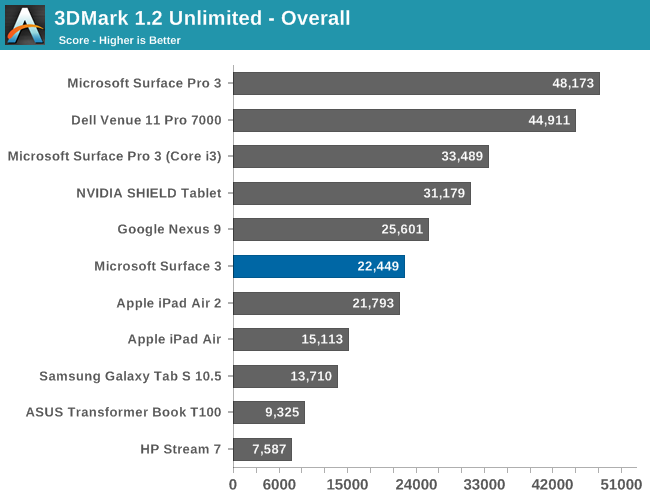


The GPU upgrade is a big improvement over the ASUS T100's Bay Trail graphics, but the Atom GPU still can not compete with the fastest tablet SoCs out there.
3DMark Notebook
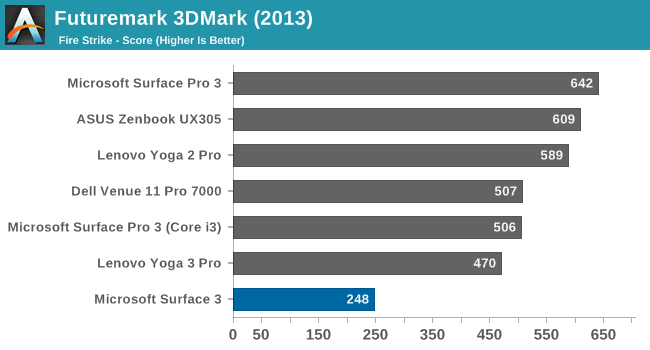
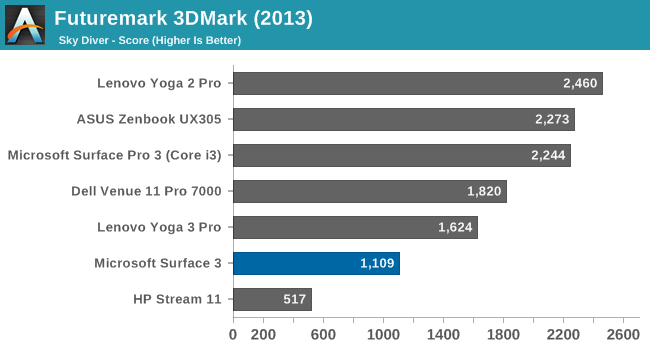
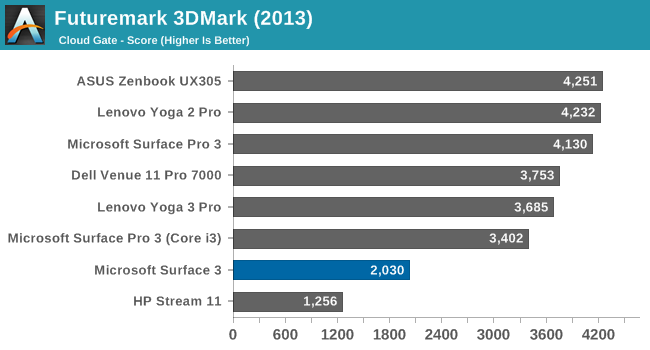

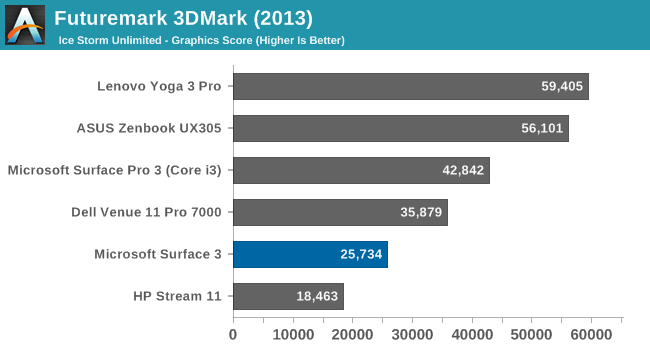
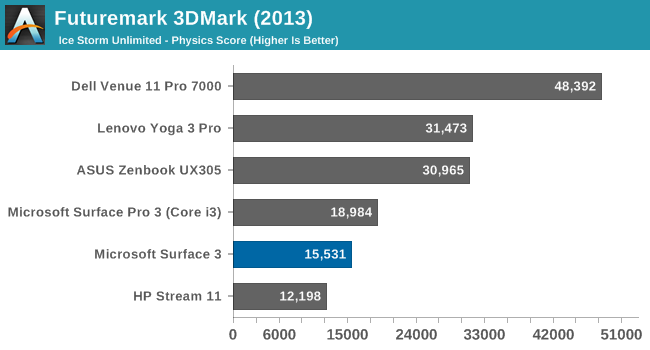
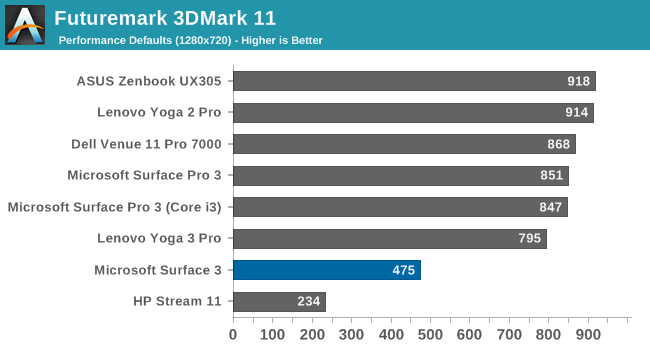
Comparing the Surface 3 to PC class hardware puts it in a pretty poor light when looking at GPU performance. Our 3DMark tests have the Surface Pro 3 with the Core i3 on average 40% faster than Surface 3. Comparing it to the Dell Venue 11 Pro with Core M, we find the Core M GPU is on average 47% faster, which is quite a gap. Let’s not forget though that the Surface 3 is a mere 2 watt SDP, whereas Core M is a 4.5 W TDP and the Haswell-Y in Surface Pro 3 is an 11.5 W TDP.
GFXBench Tablet (OpenGL)
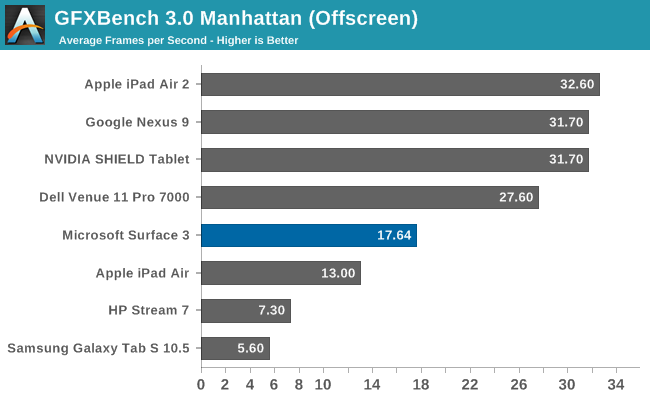
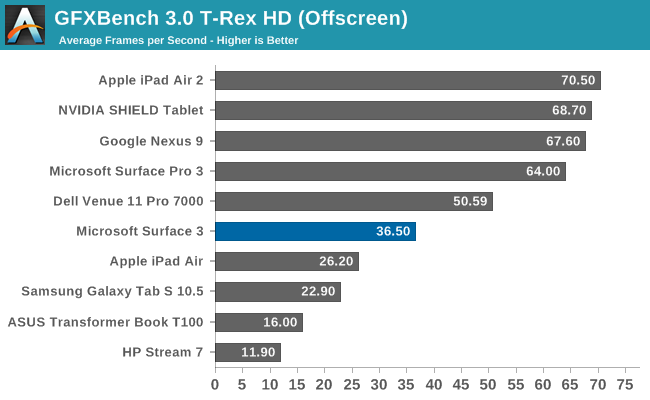
As with the 3DMark scores, the GPU upgrade is significant, but still a ways back of the best tablet GPUs out there. Intel still has some work to do on this front.
GFXBench Notebook (DirectX)
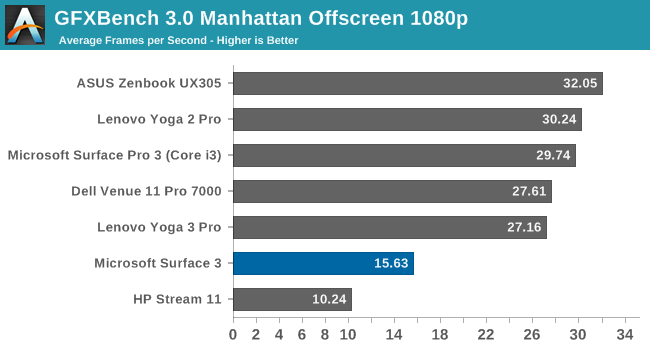
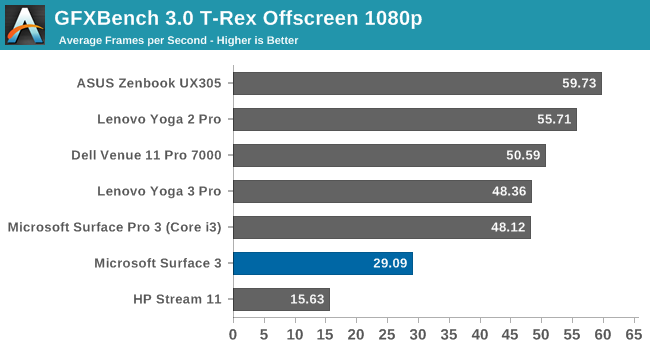
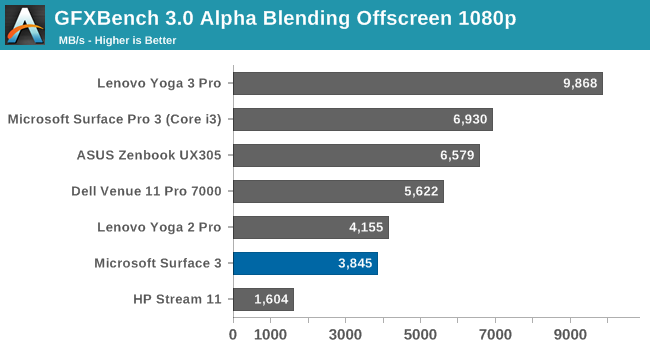

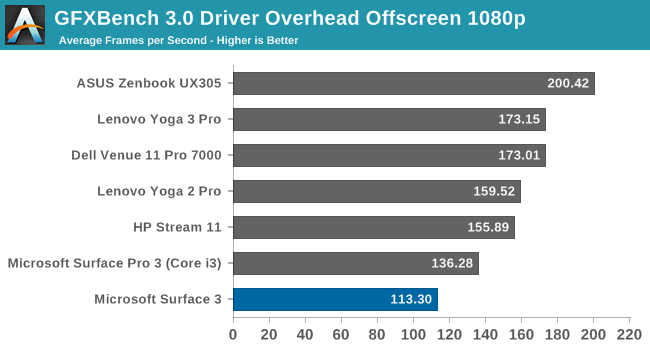
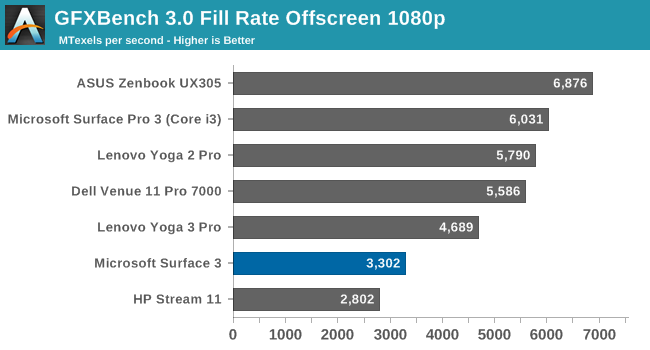

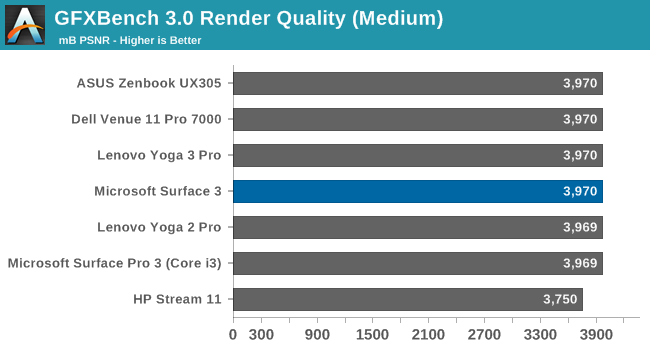
We see a similar story with GFXBench on the notebook side. The 16 EUs in our Atom SoC just cannot compete against the larger and faster GPUs in Core.
Moving on to a real-world game, we use a custom DOTA 2 benchmark for our lower powered devices. It is a very popular battle-arena game, and the GPU requirements are not too demanding.
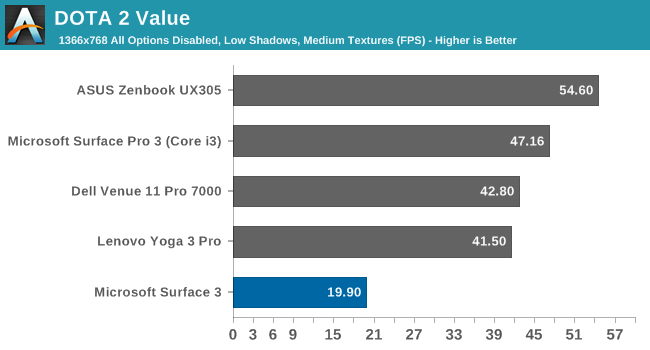
The GPU in the Surface 3 is really not enough to play most games, and even on our value settings, the Surface 3 is not a great experience for DOTA 2. The higher TDP of Core M lets it do ok in this test, but overall the Surface 3 is a long way back of even the Surface Pro 3 Core i3.
Storage Performance
Like most tablets, the Surface 3 utilizes eMMC storage rather than the SSD storage found on higher priced laptops and Core M tablets. It costs less, it is less complex, and it works. So expectations are that it will not be able to compete with the fastest solutions out there. But as a tablet, workloads should be less complex, at least in theory.
Unfortunately Microsoft shipped me the 64 GB version of the tablet, and due to PCMark 8 requiring a large amount of free space in order to perform its tests, it was unable to be run on this device. But we have run into this issue in the past, and we can turn to a couple of other tools to get a feel for how the storage performance is. Even though eMMC is slower than a good SSD, there is still different levels of performance based on the NAND in use and the controller.
I ran CrystalDiskMark over a 4 GB span and the results are below.
Surface 3 eMMC Storage (left) vs Surface Pro 3 Core i3 SSD (right)
Compared to a true SSD, the eMMC performance leaves a lot to be desired. In fact, most of the time when I was using the tablet and I found it slow, such as installing software, or loading programs, it was mostly disk bound. There are faster eMMC options available, but I will refrain from comparing it to other tablets since we do not have the same benchmarking tools for both.


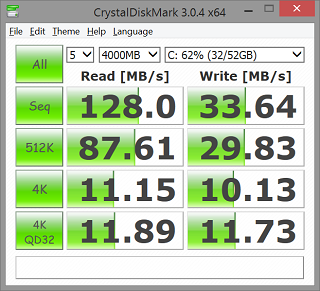
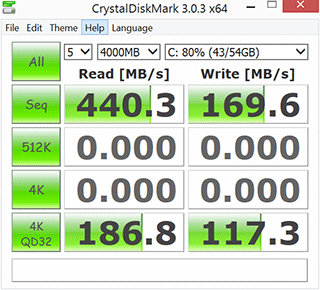








265 Comments
View All Comments
BlueBomberTurbo - Thursday, May 7, 2015 - link
Adobe only has mobile apps for iOS and Android. Not very useful for any serious production, and a stopgap measure at best until you get to a real computer. Surface 3 can run the real desktop software out of the box. And yes, you can use PS and LR, since I was able to use them on my Lenovo Thinkpad 8 (Atom Z3770 + 2GB/64GB), and the Surface 3 has a significant bump in GPU power.AlluringRaja - Tuesday, May 5, 2015 - link
Nice review. Thanks to AnandTech.romprak - Tuesday, May 5, 2015 - link
Great, thorough review - we are picking up ours this afternoon at our local BestBuy. Looking forward to playing around with it today. It will be replacing my wife's 2009 iMac that is on its last legs (overheats and I think the GPU might be failing, it gets really hot and Yosemite has just made things worse). She manages all her homeschooling and her own tasks on that computer. I'm going to give her my old 27" monitor for when she is docked at home (my Surface Pro 3 now runs a 34" Ultrawide Dell), but otherwise she can just use it on her lap for managing the kids' curriculum, etc.damianrobertjones - Tuesday, May 5, 2015 - link
"This saves a bit of weight, but also prevents the keys from being folded behind and making for an uncomfortable device to hang on to"Have you ever thought of turning the keyboard around? You then hold onto the flat surface with the keys pressed to the back of the S3.
Brett Howse - Tuesday, May 5, 2015 - link
Nope I've never thought of that, but I think I'd still rather just take it off when needed.BlueBlazer - Tuesday, May 5, 2015 - link
The 4GB RAM version has higher benchmark scores at http://www.notebookcheck.net/Microsoft-Surface-3-T... possibly due to dual channel memory used. Will there be a review of that 4GB RAM version?Brett Howse - Tuesday, May 12, 2015 - link
Hi sorry for the delayed response on this I wasn't able to check dual channel with CPU-Z. The 2 GB model is dual-channel with 2x1GB DIMMs.yefi - Tuesday, May 5, 2015 - link
Liking the mini-dp on this. Shame it can't support 4k according to the SoC's datasheet, but it would be pretty sweet to hook this up to a 30" monitor in any case.damianrobertjones - Wednesday, May 6, 2015 - link
I was under the impression that it DOES support 4k but only @30Hzyefi - Wednesday, May 6, 2015 - link
It says the hdmi can do 4k @30Hz, but doesn't mention anything for displayport. Would be nice if it could do it.